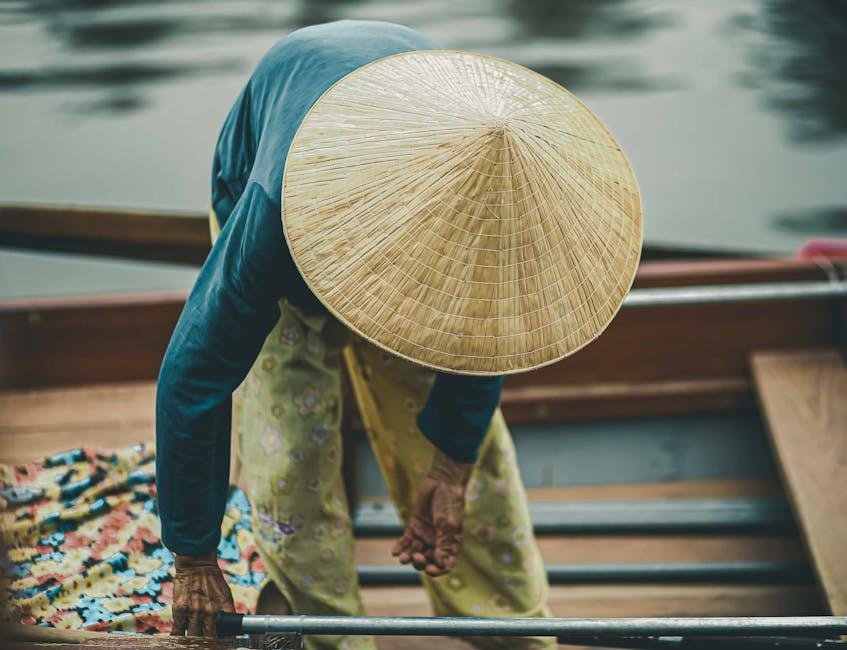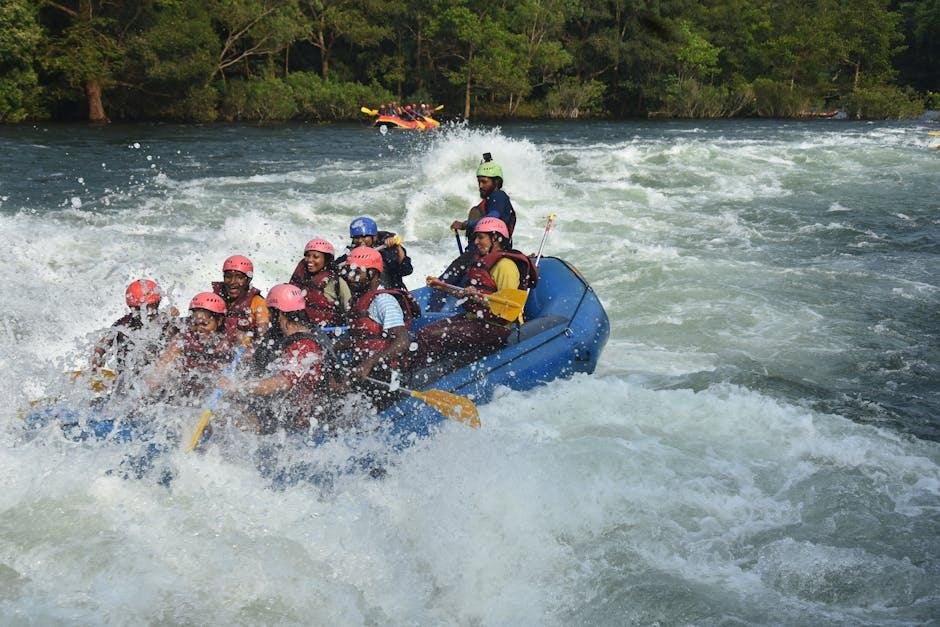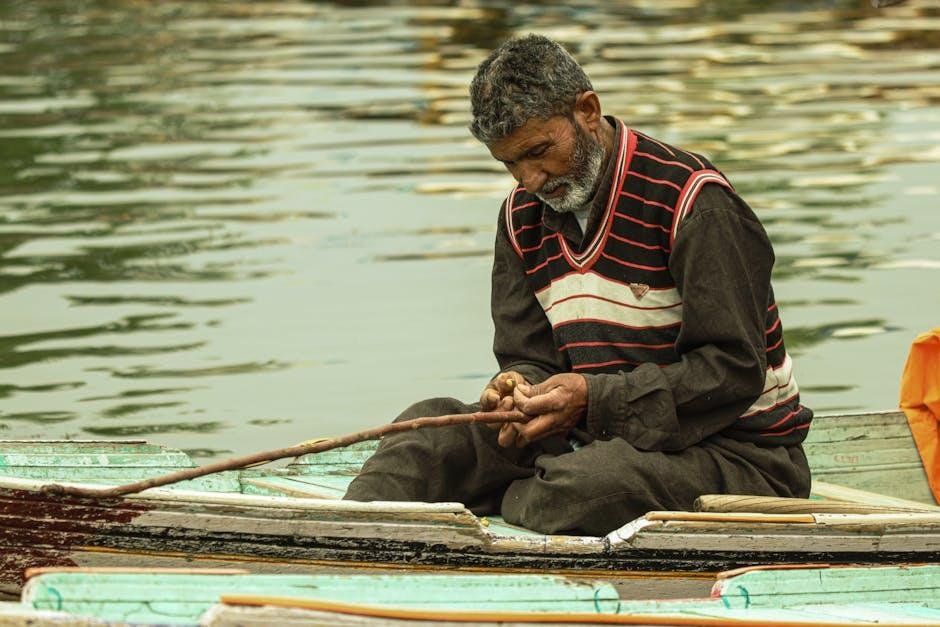Choosing the right paddle for your kayak is akin to selecting the perfect brush for a masterful painting; both are essential tools that can dramatically enhance your experience and performance. Just as an artist navigates the delicate interplay of colors and strokes, a kayaker must consider a variety of factors when it comes to paddles—length, material, blade shape, and weight all play pivotal roles in how you glide across the water. whether you’re a seasoned adventurer tackling choppy waves or a leisurely explorer winding through tranquil waters, the right paddle can mean the difference between a joyful day on the water and a frustrating struggle. In this article, we’ll guide you through the key considerations to help you find the paddle that best complements your kayaking style and aspirations, ensuring every stroke adds to the beauty of your journey.
Understanding Paddle Materials and Their Impact on performance
When choosing a kayak paddle, the material plays a pivotal role in determining performance and comfort. Paddles are typically made from various materials, each offering unique benefits and drawbacks. aluminum paddles are durable and affordable, making them a popular choice for beginners. However, their weight can be a drawback during long trips. Fiberglass paddles offer a great balance between weight and strength, providing an efficient stroke with minimal fatigue. Carbon fiber paddles, on the othre hand, are the lightest and most advanced option, allowing for maximum speed and ease of maneuverability, but they frequently enough come with a higher price tag.The choice of material can greatly influence how easily you can paddle over time, contributing to your overall enjoyment on the water.
Additionally, the impact of paddle material extends to factors such as adaptability, buoyancy, and thermal properties. paddles made with composite materials like fiberglass and carbon fiber tend to offer superior stiffness, translating to better energy transfer with each stroke. In contrast, certain plastic paddles may be more suited for recreational use due to their resilience and lower weight. The temperature of the water also affects paddle performance. For colder climates, insulation properties become crucial, whereas warmer environments may benefit from lighter materials that help keep the paddle buoyant. Understanding these nuances will help you select a paddle that not only enhances your kayaking experience but also matches your individual needs and preferences.
| Material | Weight | durability | Cost |
|---|---|---|---|
| Aluminum | Heavy | Very Durable | Low |
| Fiberglass | Moderate | Durable | Medium |
| Carbon Fiber | Light | Very Durable | High |
| Plastic | Light to Moderate | Durable | Low |

Selecting the Optimal Length for Your Paddle Style and Kayak Type
Choosing the right paddle length is crucial for maximizing efficiency and comfort while kayaking. The optimal paddle length typically varies based on your kayak type and your preferred paddling style. As an example, if you’re in a recreational kayak, which is often wider and more stable, you’ll generally benefit from a longer paddle, typically between 220-240 cm. Conversely, for sporty sea kayaks, which are narrower, a shorter paddle in the range of 210-230 cm tends to provide better control and maneuverability. Considerations such as your height and the width of your kayak are essential in determining the best fit.
Additionally, your paddling style plays a significant role in defining the right paddle length. If you prefer a high-angle paddling technique, which is more powerful and demanding, a shorter paddle can help in achieving efficient strokes. On the other hand, a low-angle technique is more relaxed and suits longer paddles, as it enables smooth glides. Here’s a quick reference table to guide you in selecting a paddle length based on your height,kayak type,and paddling style:
| Your Height | Kayak Type | Paddle Length (cm) | Paddling Style |
|---|---|---|---|
| Under 5’0″ | Recreational | 210-220 | Low-angle |
| 5’0″ – 5’6″ | Sea | 220-230 | Low-angle |
| 5’6″ – 6’0″ | Sprint/Cruiser | 210-220 | High-angle |
| Over 6’0″ | Recreational | 230-240 | Low-angle |

examining Blade Shape and Size for Efficient Paddling
Choosing the ideal blade shape and size is crucial for enhancing your paddling efficiency. When examining blade shapes, you’ll find that they come in various styles such as wide and narrow. Each shape serves different conditions; as an example, wider blades offer more surface area for propulsion, making them suitable for quick bursts of speed. In contrast, narrower blades allow for smoother strokes and better maneuverability, ideal for longer distances or when navigating through narrow passages. Understanding the water conditions you’ll encounter can guide you in selecting a blade that balances speed with control.
similarly, the size of the paddle blade plays a significant role in your overall paddling experience. A larger blade can provide more power but may require increased effort, which can lead to fatigue during extended excursions. On the other hand, smaller blades allow for a more relaxed paddling rhythm. When considering these factors, think about the following aspects:
- Water Type: Rough water vs. calm water
- Paddling Duration: Short outings vs. long distances
- paddler’s strength: Muscular endurance vs. casual use
To help visualize how these variables interact,refer to the table below:
| Blade Type | Best For | Efficiency level |
|---|---|---|
| wide Blade | Quick bursts of speed | Higher |
| Narrow Blade | Long distances & maneuverability | Moderate |

Complementing Your Experience with Ergonomic and Adjustable Features
When it comes to enhancing your kayaking adventures, the right paddle can make all the difference, especially if it features ergonomic and adjustable traits.These elements not only support your physical comfort but also improve your paddling efficiency. Look for paddles that offer:
- Adjustable Length: Ensuring the paddle fits your height and provides optimal power with each stroke.
- Grip Design: Ergonomically designed handles that reduce strain on your hands during prolonged use.
- Blade Shape: Blades that distribute water evenly to minimize fatigue and maximize propulsion.
An additional advantage of selecting paddles with adjustable features is the ability to customize your experience for different water conditions. Depending on whether you’re navigating calm lakes or tackling swift currents, the flexibility in length and angle can adapt to your needs.Consider the following aspects:
| Feature | Benefit |
|---|---|
| Length Adjustment | Improves stroke efficiency tailored to water conditions. |
| Angle Adjustment | Enhances control and reduces fatigue on longer trips. |
| Weight Distribution | Promotes better balance and reduces strain on arms and shoulders. |
Future Outlook
selecting the perfect paddle for your kayaking adventures is an essential step toward enhancing your overall experience on the water. Whether you prioritize weight, material, blade design, or intended use, understanding your personal preferences and paddling style will guide you to the paddle that feels just right in your hands. Remember, the right paddle not only improves efficiency but also contributes to your enjoyment and comfort during those serene moments on a tranquil lake or the exhilarating rush of navigating through rivers. As you embark on your kayaking journey, take the time to test different paddles, consult with fellow enthusiasts, and trust your instincts. With the right paddle in tow, the vast waterways await your exploration—so let the journey begin!
